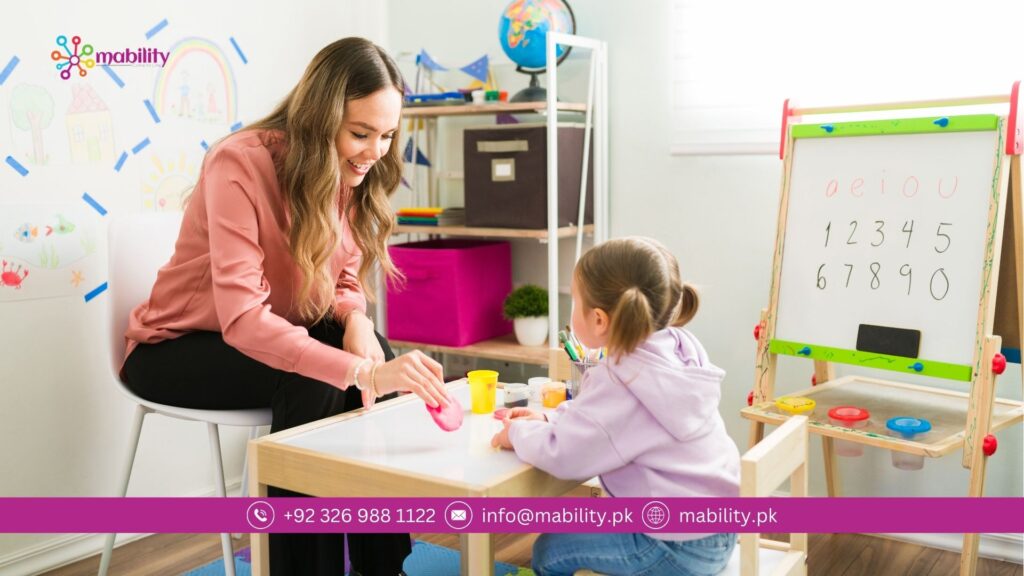
What is Play Therapy?
Play therapy is a therapeutic approach primarily designed for children, although it can also benefit adolescents and even adults in some cases. It utilizes the natural language of children: play. Through play, children can express their thoughts, feelings, and experiences, even when they might not have the words to articulate them verbally.
In play therapy sessions, therapists create a safe and supportive environment where children can freely explore their inner world. They may use a variety of toys, games, and art materials to encourage self-expression and communication. By engaging in play, children can process traumatic events, develop coping skills, enhance social skills, and work through emotional challenges
Benefits of Play Therapy:
- Taking more responsibility for certain behaviors
- Developing coping strategies and creative problem-solving skills
- Learning to fully experience and express feelings
- Stronger social skills
- Stronger family relationships
- Play therapy can also encourage use of language or improve fine and gross motor skills
Play Therapy Effectives for?
- Psychosocial issue such as shyness, anxiety, poor communication
- A behavioral issue
- Educational issues
- Disability Autism, ADHD, intellectual disability, and so on
When play therapy is used?
- It is most commonly used with children aged 3 to 12. Play therapy may be beneficial in a variety of situations, including:
- Delays in development or learning difficulties
- School-related behavioral issues
- Angry or aggressive behavior
- Traumatic occurrences
- ADHD (attention deficit hyperactivity disorder)
- ASD (autism spectrum disorder)
Types of Play Therapy:
There are several types of play therapy, each with its own unique approach. Here are some common types:
Child-Centered Play Therapy (CCPT):
CCPT is based on the principles of nondirective therapy. The therapist creates a safe and accepting environment where the child can freely express themselves through play. The therapist follows the child’s lead, providing empathy and unconditional positive regard.
Filial Therapy:
In filial therapy, parents are trained to be therapeutic agents for their own children. The therapist teaches parents play therapy techniques to use at home with their children. This approach aims to strengthen the parent-child relationship and improve communication.
Gestalt Play Therapy:
Incorporating principles from Gestalt therapy, this approach focuses on the here and now. Children are encouraged to become aware of their thoughts, feelings, and behaviors during the therapeutic process. Gestalt play therapy often involves the use of expressive arts and creative activities.
Theraplay:
Theraplay is a structured, attachment-based form of play therapy. It emphasizes building and enhancing the parent-child relationship through interactive and playful activities. Therapists use games, activities, and exercises to promote a secure attachment and address relational challenges.
Art Therapy:
While not exclusively play therapy, art therapy often includes play elements. Clients use various art materials to express themselves creatively. This can be particularly effective for individuals who may find it challenging to express their thoughts and emotions verbally.
Sand-play Therapy:
In sand-play therapy, clients create scenes in a tray of sand using miniature figures and objects. The process is considered a form of nonverbal communication, allowing clients to explore and represent their inner world symbolically.
Narrative Play Therapy:
This approach involves storytelling and the use of imaginative play to help children externalize and make sense of their experiences. Therapists may use puppets, dolls, or other props to facilitate storytelling and creative expression.
Cognitive-Behavioral Play Therapy (CBPT):
CBPT combines cognitive-behavioral techniques with play therapy. It helps children identify and change negative thought patterns and behaviors through play activities, games, and role-playing.
It’s essential to note that therapists may integrate elements from multiple approaches based on the unique needs of the individual client. The choice of play therapy type depends on factors such as the client’s age, personality, and presenting issues.

Mability: Your Trusted Partner in Special Education in Lahore, Rehabilitation in Lahore, and Well-being. Discover a world of inclusive learning and holistic care for children.
Main services
- Special Education
- Physiotherapy
- Nutritionist
- Occupational Therapy
- Psychology
- Speech Therapy
Key features
- Highly Qualified Therapists
- Modern & Well-Equipped Campus
- Excellent Treatment Department
- Stem Learning
- Unique Tailored Plans
Social Links
- Youtube
